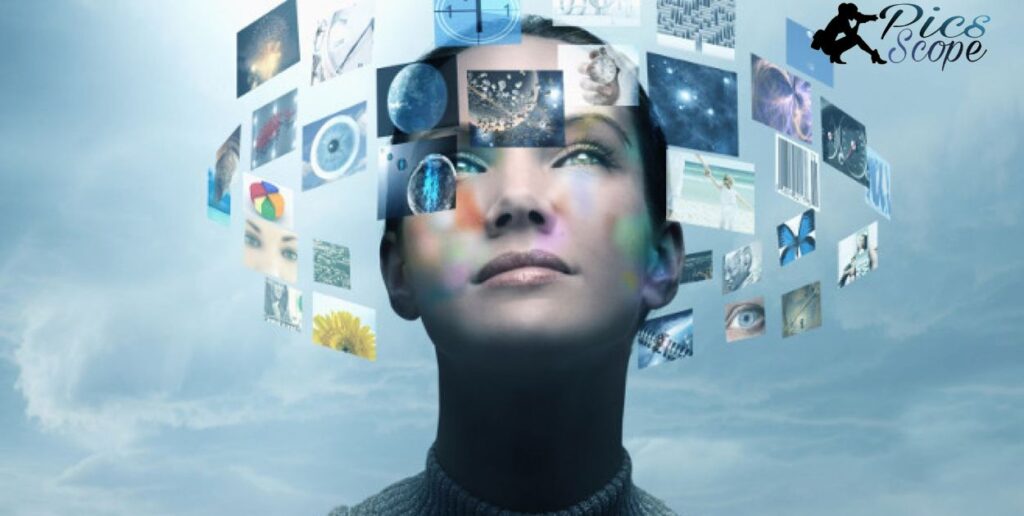Photojournalism is the practice of telling true stories through photographs. It involves capturing newsworthy images that convey information about current events. Photojournalists document history as it unfolds before their eyes. Their goal is to inform viewers and communicate the truth of what is happening in the world around them.
What Is Photojournalism?” This unique field combines photography with journalism to visually communicate narratives about real-world people, places, events, and issues. Unlike other types of photography focused on art or commercial interests, photojournalism is driven by an ethical responsibility to truth, accuracy, and objectivity in imagery.
Photojournalists are visual storytellers and documentarians. They photograph impactful moments as they happen and share those images along with essential context. While the photographs themselves captivate attention, their greater purpose is to enlighten and educate.
What kind of photography is photojournalism?
Photojournalism is a type of photography that tells news stories through images. The goal is to inform and show objective reality. Photojournalists adhere to strict ethics like regular journalists. They capture real events as they unfold, without staging or manipulating the situation. The photographs aim to convey the truth of the situation.
How does photojournalism tell visual stories?
Photojournalism tells visual stories by capturing decisive moments that encapsulate key aspects of an event or issue. Single images can convey complex ideas quickly. Photojournalists may also tell longer stories through a series of images over time. Context and captions add meaning. The composition, timing and point of view shape the narrative.
What equipment do photojournalists use?
Photojournalists often use DSLR or mirrorless cameras with telephoto zoom lenses to get close candid shots from a distance. They favor fast, continuous shooting modes and high ISO capabilities to capture action in low light. Portability is key as they may need to carry gear all day while chasing unfolding events.
How do photojournalists capture emotional moments?

Photojournalists connect with subjects to put them at ease and observe telling moments that reveal deeper truths. They anticipate peak action and emotion. Composition, lighting and timing heighten the mood and atmosphere. Context and storytelling evoke viewers’ empathy. Technical skills free them to focus on the narrative.
Why is objectivity important in photojournalism?
Photojournalists document real events. If images are manipulated or staged, it erodes public trust. People rely on photojournalism to see an impartial record of what occurred. Objectivity and truthfulness uphold integrity.
How do photojournalists remain impartial?
They avoid manipulating scenes when shooting. No posing subjects or directing events. Images must represent the unmodified scene. Also, minimal editing only to accurately render the original lighting and colors. Photojournalists remain detached observers without influencing events.
Should photojournalism photos be edited?
Edits should only make technical corrections, like removing dust or adjusting brightness for printing. Content cannot be altered by adding, removing, or rearranging objects in the scene. Even minor edits that misrepresent reality violate ethics. Strict rules limit changes to color, contrast and cropping that preserve accuracy.
Can photojournalism photos be posed?
Photojournalists cannot pose scenes to mislead viewers into thinking they naturally occurred. News photos must show impartial documentation without direction. Portraiture has different standards where posing subjects are expected.
But captioning must clarify images were deliberately composed versus candid documentation. Money As A Photographer On Instagram can be made in several ways, including selling prints, offering photography services, teaching workshops, selling presets, and partnering with brands
What makes a strong photojournalism image?
A strong photojournalism image tells a story and conveys emotion. It uses composition and lighting to draw the viewer in and highlight the most important elements. Strong images often break compositional “rules” to maximize visual impact.
What compositional techniques are used?
Photojournalists focus on capturing the light and visual relationships in a scene over adhering to compositional rules. Techniques like leading lines, symmetry, patterns, contrast, and cropping images in creative ways can make photos more compelling. Unique vantage points and perspectives also help.
How does lighting affect news photos?
Lighting is crucial in photojournalism. It determines what the camera sees and creates mood. Side lighting or backlighting can add depth, while frontal lighting brings out detail. Low light requires technical skill but creates atmosphere. Light guides composition and the story.
When should photojournalists intervene?
Ethically, photojournalists should not influence events or endanger themselves or others. But anticipating key moments and waiting for the decisive instant to tell the best story is part of the craft. Non-intervention usually results in the most authentic images.
What makes a strong photojournalism image?
A strong photojournalism image tells a story and conveys emotion. It uses composition and lighting to draw the viewer in and highlight the most important elements. Strong images often break compositional “rules” to maximize visual impact.
What compositional techniques are used?
Photojournalists focus on capturing the light and visual relationships in a scene over adhering to compositional rules. Techniques like leading lines, symmetry, patterns, contrast, and cropping images in creative ways can make photos more compelling. Unique vantage points and perspectives also help.
How does lighting affect news photos?

Here are some key ways that lighting impacts news photos:
- Sets mood and tone – The quality and direction of light influences the mood and emotional impact of a news photo. Hard, dramatic lighting can convey intensity, while soft, diffuse lighting suggests calm.
- Directs viewer attention – Photographers can use lighting to highlight key subjects or guide the viewer’s eye through a scene. Side lighting creates a sense of depth and dimension. Backlighting helps foreground elements stand out.
- Reveals critical details – The right lighting brings out subtle details that allow viewers to better analyze and understand a news event or situation. It impacts what the viewer can actually see and perceive.
- Establishes context – Lighting conditions provide visual cues about the environment, time of day, location, and other contextual factors that allow viewers to orient themselves within a news photo.
- Impacts authenticity – Overly manipulated lighting can reduce the perceived authenticity of news images compared to lighting that matches the actual conditions. However, some enhancement is often needed.
- Logistical factor – The availability and quality of light impacts when and where news photos can be taken. Photographers must work with whatever lighting a breaking news situation provides.
So in summary, lighting is a critical consideration for news photographers in setting the mood, directing attention, bringing out details, establishing context, and conveying authenticity. It’s both an aesthetic tool and a logistical factor.
When should photojournalists intervene?
Ethically, photojournalists should not influence events or endanger themselves or others. But anticipating key moments and waiting for the decisive instant to tell the best story is part of the craft. Non-intervention usually results in the most authentic images.
How did photojournalism originate and evolve?
Photojournalism originated in the mid-19th century as a way to document wars and battles. Early examples include Roger Fenton’s photographs of the Crimean War in 1855. As camera technology advanced, the ability to easily capture images led to increased usage of photos in newspapers and magazines to visually tell news stories.
What were some early examples?
In addition to Fenton’s war images, early examples include Mathew Brady’s Civil War photos and Jacob Riis’s late 1800s images exposing New York City slum conditions. Magazines like Life, Picture Post, and Vu advanced photojournalism’s reach and impact in the 1930s and 40s during the “Golden Age.”
How did technology change photojournalism?

Advances in flash, lens, and camera mobility enabled new photographic capabilities. The transition from film to digital further revolutionized speed and efficiency. The internet provided increased distribution platforms. Camera phones and social media have more recently allowed eyewitness images to shape coverage of breaking news events.
What ethical issues emerged?
Questions around image staging, manipulation, and privacy have long challenged photojournalism ethics. Guidelines from organizations like the NPPA seek to uphold principles of truthful and objective visual reporting. Still, practices continue to be debated regarding unbiased capturing of sensitive events, use of graphic images, and responsibilities around public impact.
What does the future hold for photojournalism?
The future of photojournalism looks bright due to advancements in technology. However, ethical concerns around image manipulation using AI remain. Photojournalists will likely leverage AI tools to enhance efficiency while preserving creative vision and authenticity.
How is social media impacting practices?
Social media provides wider reach but can diminish photojournalism quality if optimized just for clicks. Maintaining high ethical standards on social platforms is important.
Are new skills required for modern photojournalists?
Modern technology has led to significant changes in the field of photojournalism. While traditional skills like visual storytelling remain important, photojournalists today need a new and expanding set of tech-focused abilities to stay competitive. Some of the key new skills include:
| New Skill | Description |
| Drone Operation | Ability to maneuver and control camera drones to capture unique aerial perspectives |
| 360° VR Photography | Skills to shoot immersive 360° photos and video for virtual reality platforms |
| Smartphone Photography | Proficiency in taking professional-grade images with smartphone cameras |
| Multimedia Production | Knowledge of producing videos, audio clips, data visualizations etc. in addition to still images |
| AI Photo/Video Editing | Familiarity with new AI-powered editing tools for tasks like background removal, color correction etc. |
The table above outlines some of the important emerging skill sets modern photojournalists must develop alongside long-standing competencies like visual storytelling. Adapting to these new tools while preserving the core values of authenticity and journalism ethics is key for photojournalists staying relevant today.
Will AI and automation affect photojournalism jobs?
AI assists rather than replaces photographers. By automating tedious tasks, AI gives more time for creativity. However, low-skilled jobs like sorting images may be automated. Overall, AI empowers rather than threatens photojournalists.
FAQ’s
What do you mean by photojournalism?
Photojournalism is telling news stories mainly through images rather than just text.
What are the 5 basics of photojournalism?
The 5 basics are relevance, timeliness, narratives, aesthetics, and honesty in depicting events.
What are the 4 types of photojournalism?
The 4 main types are spot news, general news, sports action, and portrait personality photojournalism.
What does a photojournalist do?
A photojournalist captures newsworthy images to visually communicate stories and current events.
How is photojournalism different from other photography?
Photojournalism adheres to strict journalistic guidelines on truth, objectivity and informing the public unlike other creative fields of photography.
Conclusion
Photojournalism is the practice of visually communicating news stories through images. Unlike other fields of photography, photojournalism adheres to strict ethical guidelines and values truth, objectivity, and informing the public.
Photojournalism plays a vital role in documenting current events and raising awareness on social issues. While new technologies are transforming practices, the core mission remains storytelling through authentic, compelling photographs.
As an evocative medium, photojournalism will continue highlighting diverse human experiences and capturing the defining moments of history. However, preserving integrity in the digital age requires vigilance around emerging manipulation techniques enabled by AI and other innovations.







